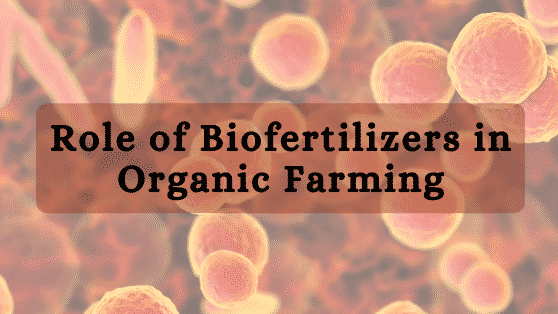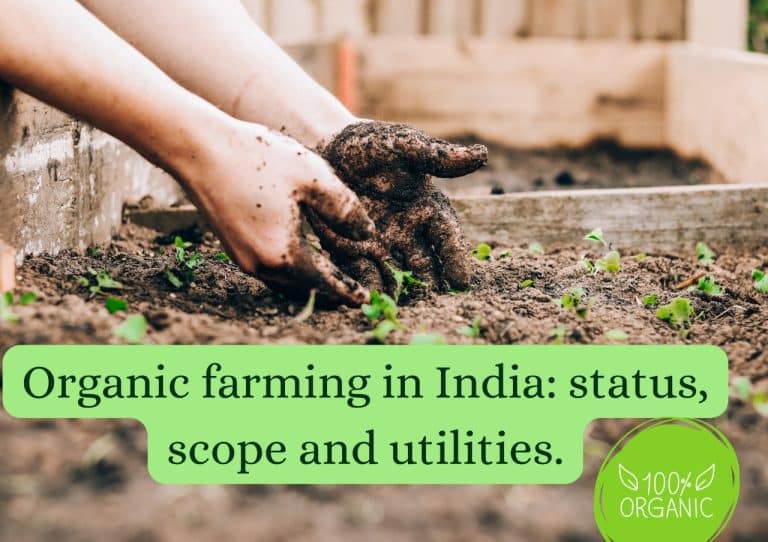Introduction to Biofertilizers
The use of beneficial microorganisms as a biofertilizer has gained prominence in the agriculture sector due to its potential significance in food safety and long-term crop development. Farmers are using biofertilizers over synthetic fertilizers. If you need information regarding biofertilizers and their use in organic farming, get in touch with the farming consulting experts of India, KisaanMitrr.
Bio-fertilizers are preparations containing live or latent cells of efficient strains of nitrogen-fixing, phosphate solubilizing, or cellulolytic micro-organisms that are applied to seed, soil, or composting areas to speed up microbial processes that increase the availability of nutrients that are easily assimilated by plants.
They improve soil fertility by fixing atmospheric nitrogen, solubilizing insoluble soil phosphates, and producing plant growth chemicals in the soil, both in conjunction with plant roots and independently of them. They are being encouraged to use the biological mechanism of nutrition mobilization that is naturally available to them.
Characteristics of some Biofertilizers
Rhizobium
Rhizobium is a symbiotic bacterium that is found in the association with legumes. The availability of a suitable strain for a particular legume is critical for successful Rhizobium nodulation of leguminous crops. It colonizes the roots of certain legumes, forming tumour-like growth known as root nodules that operate as ammonia manufacturers. Rhizobium can fix atmospheric nitrogen in a symbiotic relationship with legumes and non-legumes such as Parasponia.
Azotobacter
Azotobacter is a heterotrophic, aerobic, free-living organism. In neutral or alkaline soils, they can be found. The bacterium produces anti-fungal antibiotics that minimize seedling mortality by inhibiting the growth of many dangerous fungi in the root region.
Azospirillum
Azospirillum is a heterotrophic, associative bacterium. They create growth-regulating chemicals in addition to fixing nitrogen. Because they grow and fix nitrogen on salts of organic acids such as malic and aspartic acid, Azospirillum forms an associative symbiosis with many plants, particularly those with the C4-dicarboxylic pathway of photosynthesis (Hatch and Slack pathway). As a result, it’s best for maize, sugarcane, sorghum, pearl millet, and other similar crops.
Phosphate solubilizers
The ability of diverse bacterial species to solubilize insoluble inorganic phosphate compounds such tricalcium phosphate, dicalcium phosphate, hydroxyapatite, and rock phosphate has been studied in several studies. Pseudomonas, Bacillus, and other bacterial species possess this capability. In soil and plant rhizospheres, there exist significant populations of phosphate-solubilizing bacteria.
Phosphate absorbers (Mycorrhiza)
“Fungus roots” is what the term Mycorrhiza means. It is a symbiotic relationship between host plants and a specific group of fungi at the root system, in which the fungal partner benefits by getting its carbon requirements from the host’s photosynthates, and the host benefits by getting much-needed nutrients that would otherwise be inaccessible to it, thanks to the fungus’ fine absorbing hyphae.
Zinc solubilizers
Microorganisms such as B. subtilis, Thiobacillus thioxidans, and others can help to solubilize zinc. These bacteria can be employed as bio-fertilizers to help fix micronutrients like zinc dissolve. The findings demonstrate that Bacillus sp. can be employed as a zinc bio-fertilizer in soils with high native zinc levels or in combination with insoluble zinc compounds.
What are the benefits of Biofertilizers?
- They promote plant growth and increase crop yields. They also improve soil health while increasing crop yields since they use organic material.
- Farmers looking for low-cost ways to maintain their land and crop productivity can consider biofertilizers. This organic product can be used by low-income farmers to achieve optimal crop yields.
- Plant growth stimulation, disease control, and insect prevention can all be accomplished with them. Biofertilizers, in essence, can reduce the need for standard fertilizer and pesticide inputs which are not good for long-term plant health.
- They can be generated as a byproduct of biogas power generation. Biogas generators use organic material like animal manure or specific crops to generate renewable energy. When these machines have used up all of the biofuels to make biogas, the residue can be used as biofertilizers, effectively making the process sustainable.
- By releasing both soluble and inaccessible phosphorus, they increase the amount of phosphorus in the soil.
- They are beneficial to the environment as well as the economy.
Conclusion
The use of bio-fertilizers can be a significant step toward organic farming. As we’ve seen, there are several advantages to using them over synthetic fertilizers. Most importantly, they do not affect the soil or the environment, and what could be better for a farmer than that? So, using organic fertilizer can be beneficial to both farmers and consumers. For more information contact KisaanMitrr.


